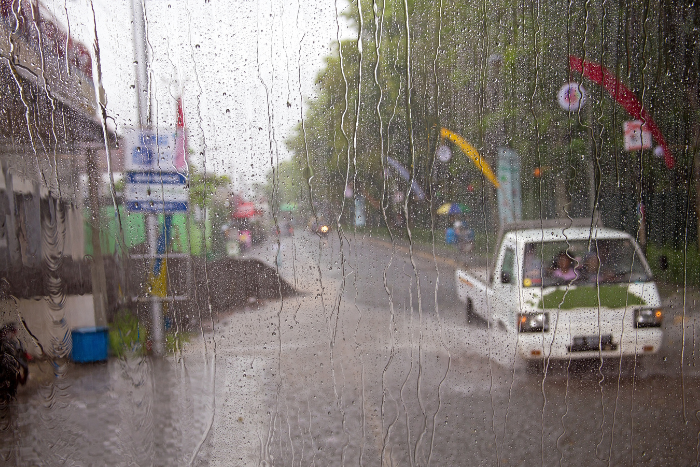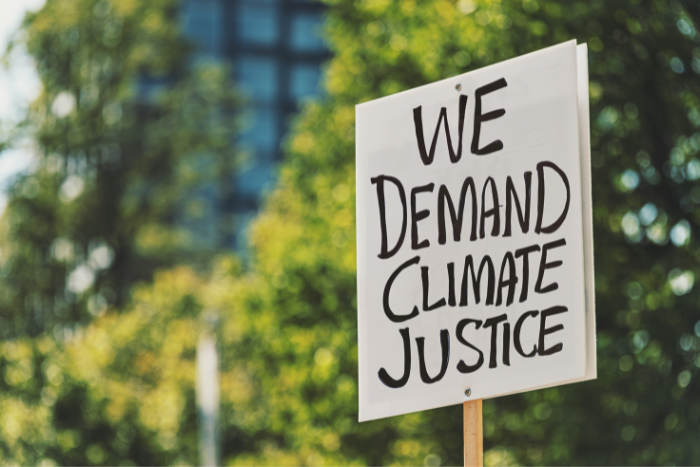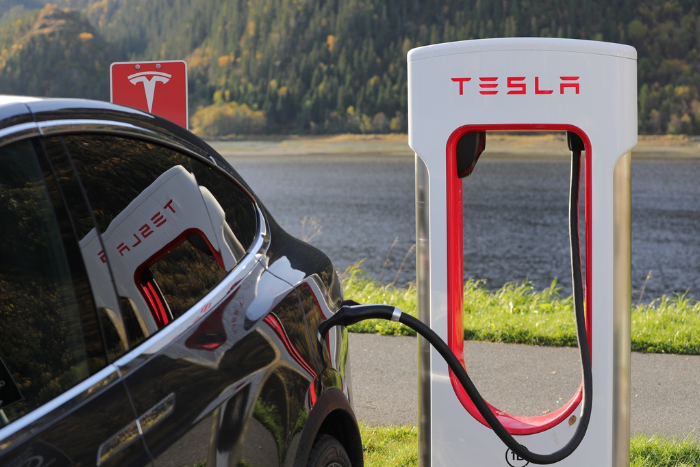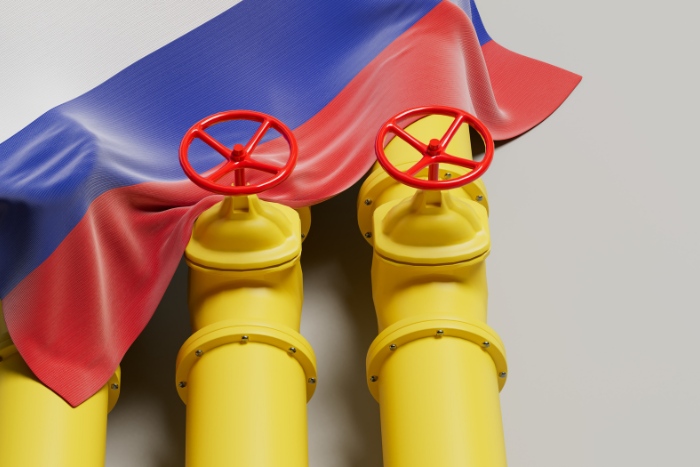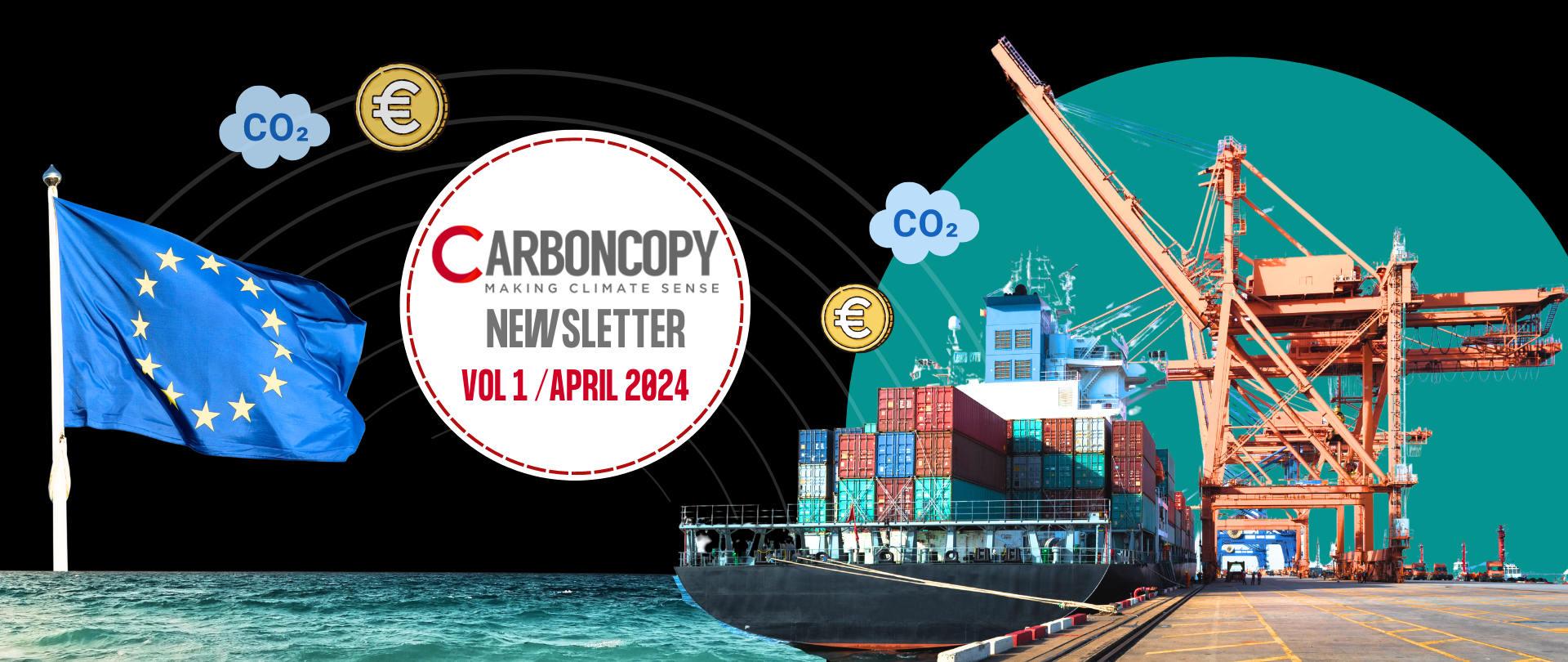
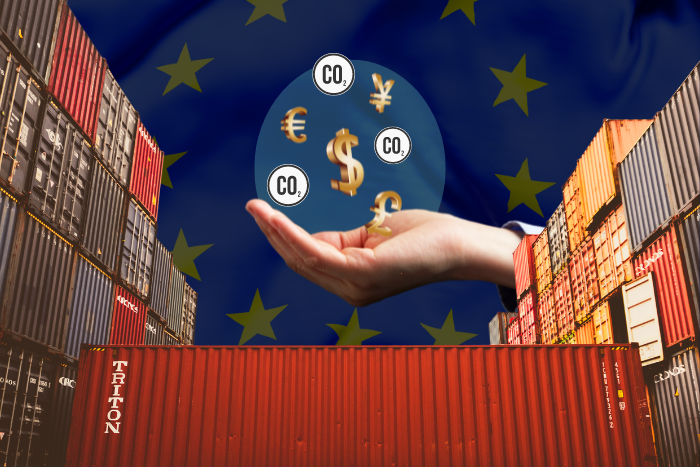

Europe’s new Carbon Border Adjustment Mechanism has triggered retaliatory announcements from China and India, which may not bode well for crucial trade talks slated for this year. Read more
Slated to become fully operational in 2026, the carbon tax on imports of selected products is supposed to highlight Europe’s ambitious climate action through an import tax that will help it raise €14 billion.
CBAM: Just another brick in the contentious global trade wall?
Europe’s new Carbon Border Adjustment Mechanism has triggered retaliatory announcements from China and India, which may not bode well for crucial trade talks slated for this year
The chaotic start to Europe’s Carbon Border Adjustment Mechanism (CBAM), one of the world’s most controversial mitigation measures, has set off a chain reaction for similar trade protectionist carbon barriers across large economies like the UK, US and China.
The CBAM, which riled up global trade talks in March, is expected to remain a sore difference when nations meet to discuss global supply chains in May this year. Birthed in 2021 when the century’s worst pandemic, Russia’s attack on Ukraine and the deepening of the US-China economic rivalry, redrew security and trade maps as supply chains were disrupted, Europe’s CBAM was also a recognition that climate change magnified supply risks to the world’s most affluent corners.
Slated to become fully operational in 2026, the carbon tax on imports of selected products is supposed to highlight Europe’s ambitious climate action through an import tax that will help it raise €14 billion, according to the Asian Development Bank.
Yet, the CBAM is expected to cut exports from western and southwestern Asia, including India, to the EU in return for a small reduction in emissions that would quickly be offset by the continuing increase in carbon-intensive production throughout Asia, according to the ADB. Mechanisms to share emission reduction technology would be more effective in place of the unilateral measure, it said. India and South Korea are among Asian nations that will be affected the most even in the initial stages.
About 27% of India’s iron ore pellets, iron, steel, and aluminium exports worth about $8 billion are expected to be hit by the European Union’s CBAM. That may not seem substantial for the world’s fastest growing major economy, considering that overall trade between India and the EU stood at about 30.4 billion Euros in 2020.
For supplier nations like India, the concern, however, is not limited just to the EU’s CBAM measures. The new levy is also being widely watched for its ability to shrink world trade through other similar protectionist measures being announced in the name of climate mitigation. The UK is expected to finalise its version of CBAM this year, while the Republicans and Democrats in the US have introduced four bills on carbon border adjustments. The Global North’s carbon taxes have triggered retaliatory announcements from China and India, threatening the already tenuous export markets for the Global South’s small- and medium-scale enterprises.
Countries should “not be complacent about the CBAM’s limited initial coverage of five sectors,” according to Anuradha R V, partner at New Delhi-based Clarus Law Associates. “The ambit of the border tax is bound to expand to semi-finished and finished products in a review planned next year, given CBAM’s basic objective to level the playing field for EU producers.” That means a wider section of industry, especially India’s MSMEs can expect to be hit.
While the EU’s CBAM will eventually affect the entire production and trade cycle for all products, a similar move is expected in the UK by 2027. In the US, both Republican and Democrat senators are proposing laws to levy environmental charges on imports.
The fear is that this will potentially make UNFCCC climate goals irrelevant, according to Anuradha. Such charges could also cancel out the benefits of tariff reductions and market access India hopes to gain through its ongoing free trade negotiations. Smaller producers remain at risk, as they face not just the financial burden of carbon price differentials, but also significant compliance costs from data collection, auditing, and emissions certification. Understanding this mechanism needs a slight introduction to the concept of carbon pricing.
Measuring the “societal cost” of carbon emissions
CBAM, which has sought to impose tariffs linked to internal EU carbon prices on imports like iron and steel, aluminium, fertiliser and cement, has been designed to mirror the EU’s existing Emissions Trading System (ETS). And is seemingly in line with the widespread acknowledgment that carbon pricing holds the key to mitigating climate change.
A carbon price charges a fee per metric tonne of CO2 emissions to reflect their societal cost. It comes in two forms—a carbon tax and the ETS, known as “cap and trade.” This method motivates companies to lower emissions by adopting greener technologies or methods. Applying carbon pricing broadly across all industries and transport can significantly help in reducing global carbon emissions, according to the World Bank.
In policy terms, the EU has described CBAM as a way to prevent “carbon leakage” where any government attempt to cut emissions by pricing carbon simply leads to emissions-intensive production being moved to other countries.
While the first phase till 2026 covers imports in carbon-intensive sectors, CBAM is expected to apply to a broader range of imports over time. Production in India may face implicit tariffs of about 10.5% value-added tax once CBAM comes into effect fully, according to a study by the Asian Development Bank published in February.
The ETS or calculated price of carbon can directly impact other Asian sub-regions and could account for reductions in GDP in East Asia and Southeast Asia and would have “large negative effects” in India and China, it said.
A heavy price to pay
And while the Indian government has introduced the idea of a new regulation on trading carbon credits, as of today, the country lacks a way to measure the price of carbon embedded in its exports. This knowledge disparity is also a burden, say some.
“The administrative part of it itself will raise costs,” said Ajay Srivastava, founder of the New Delhi-based trade think tank GTRI. “The actual obligation is on the EU importer. But the data they will look for is with the India entity. The costs for satisfying this data requirement will have to be taken into account.”
CBAM also hits at the principle of Common But Differentiated Responsibility (CBDR) enshrined under the UNFCCC climate principles and will impose a heavy cost on developing and underdeveloped nations. The EU nations are among developed nations that agreed to pay their developing counterparts $100 billion in climate finance.
“We sat with the EU at the UN and decided on CBDR and you have an NDC (Nationally Determined Contribution) much higher than mine,” said Srivastava. “So actually, you have to pay me to help me clean up my work. But instead now you are saying to me: pay me if you want to enter my market. You are hitting at my comparative advantage.”
Justice for all?
Yet, approaching the World Trade Organization is not yet an option for nations, including India. While India waits to clear its own carbon credits trading system to counter the EU’s carbon pricing, it has also raised an objection against CBAM at the WTO.
Yet, the WTO’s operational systems, including the dispute settlement body, and the scope of its agendas, which urgently need reforms to address the evolving nature of global trade, remain hobbled by the US. The world’s biggest economy, which also hosts the WTO, has, since 2016, refused to approve new judges to the WTO’s Dispute Settlement Body and has blocked the reappointment of those whose terms have expired.
Yet, as geopolitical tensions like the ongoing Israel-Iran attacks, the Ukraine war and elections across the world raise uncertainties, global trade is expected to run into more protectionist walls. With more extreme weather worsening the climate crisis, nations will have to weigh risks of relying on local markets versus global supply chains.
While affluent nations may find this balance easier for now, it would be crucial for India and other Asian economies to continue building regional and global trade partnerships to boost their economies in the face of future climate risks.
As much as 51% of India’s farmed area accounting for 40% of production is rain-fed and 47% of the population is dependent on agriculture for livelihood.
Monsoon to be ‘above normal’ in India: IMD
India may receive “above normal” monsoon rainfall between June and September, the India Meteorological Department (IMD) said in its long-range forecast. India received below normal rains in 2023, HT reported, adding that this would mean the overall volume of rainfall across the country to be at 106% of the long period average (LPA), with an error margin of 5%. The prediction will be updated in May. M Ravichandran, secretary, Ministry of Earth Sciences, attributed the forecast to expected changes in oceanic temperature patterns and the amount of snow cover in the northern hemisphere.
However, latest climate model forecasts indicate that El Nino is likely to weaken to neutral conditions during the early part of the monsoon season (June-July), and La Nina conditions are likely to develop during the second half of the monsoon season (August-September).
The newspaper added that monsoon delivers nearly 70% of India’s rain and is the lifeblood of its economy. As much as 51% of India’s farmed area accounting for 40% of production is rain-fed and 47% of the population is dependent on agriculture for livelihood.
Consistent and moderate amounts of rain—as opposed to heavy or very heavy rainfall days—is crucial for the country’s agriculture and rural sector.
IMD declares ‘severe heatwave’ at nearly 40 degrees in Mumbai
Mumbai’s maximum temperature burned at 39.7 degrees on Tuesday making it the hottest day in April in a decade according to the India Meteorological Department (IMD).
According to meteorologists, the city is experiencing hot day and night temperatures due to a cyclonic circulation over Central Maharashtra, resulting in the influx of easterly winds, The Indian Express reported adding that attributing the spike to these easterlies, experts have said that the temperature is expected to oscillate between 38 and 39 degrees Celsius until Wednesday at least.
The sudden spike of temperatures this week is a harbinger of what lies in store for the city, with IMD scientists indicating that more heatwaves are likely to sweep the entire state this summer, the newspaper said.
Extreme rain: Dubai experiences a year’s worth of rain over 12 hours, at least 18 die in Oman
In just half a day, around 4 inches (100 mm) of rain drowned the city of Dubai, according to weather observations at the airport. The city experienced rain worth entire year, according to United Nations data. The showers were so extreme that some motorists fled leaving their vehicles as the floodwater rose and roads turned into rivers, the CNN reported, adding that the tarmac of Dubai International Airport—recently crowned the second-busiest airport in the world—was under water as planes taxied on floodwaters. The flooded airport was shut down for nearly a half hour on Tuesday. The news outlet reported that Dubai—like the rest of the United Arab Emirates—has hot and dry climate. As such, rainfall is infrequent and the infrastructure is not in place to handle extreme events. Extreme events like this will become more frequent due to human-driven climate change. As the atmosphere continues to warm, it’s able to soak up more moisture like a towel and then ring it out in the form of more extreme gushes of flooding rainfall.
Heavy rains in Oman killed at least 18 people, including 9 schoolchildren and their driver, as the vehicle they were in got washed away by floodwaters in Samad A’Shan on Sunday.
Vanishing wells of Marathwada: Farmers report water table dropped to 300 metres in 30 years
Maharashtra’s Marathwada is grappling with severe drought-like conditions following years of scanty rain, DTE reported, adding that lands are slowly turning arid, much to the despair of farmers. According to official data, the major dams in the Aurangabad region have 19.38% water storage left in 2024, compared to 40.79% the same time last year. Medium-sized dams have 17.78% water storage, while small dams have 14.52% in 2024 compared to 54.74% and 46.57%, respectively, the outlet said.
Groundwater sources are running dry, as water levels have depleted by 245 metres in just 30 years. Water-intensive crops like sugarcane and sweet lime has only exacerbated the problem.
Experts told DTE the drought is clearly a human-made disaster, due to the mismanagement of water. After 10 years, the ₹9,630 crore Jalyukt Shivar Abhiyan (JSA) scheme for drought-proofing Maharashtra can provide water to just 487 people for a year, experts said.
The state government’s 630,000 water conservation interventions across 22,586 villages under the JSA cost the public exchequer ₹9,630 crore, according to the 2020 report of the Comptroller and Auditor General of India (CAG).
India’s built-up area grew by 2.5 million hectares in 17 years
India’s built-up area steadily increased between 2005-06 to 2022-23, expanding by almost 2.5 million hectares, mostly by diversion of agricultural land, a new analysis showed.
The built-up land showed a modest increase with an overall growth of around 31% during the period from 2005-06 and 2022-23, according to data released by the National Remote Sensing Centre (NRSC), ISRO. During this period, around 35% of built-up area has been added (average increase of around 2.4% annually from land cover, which include “wasteland” and agricultural land cover). State defines wasteland as “degraded and unproductive land” that contributed significantly (12.3%) to built-up area expansion.
India lost over 1,500 sq km of land to ‘catastrophic’ soil erosion
A huge 30% of India’s landmass is experiencing “minor” soil erosion, while a critical 3% faces “catastrophic” topsoil loss, according to a new research.
The study, Geospatial modeling and mapping of soil erosion in India, for the first time, classified soil erosion for the whole country. Erosion reduces fertility of topsoil, full of nutrients and moisture essential for plant growth. It results in decreased crop yields. Brahmaputra Valley in Assam was the biggest hotspot for soil erosion in the country the study said. Data accessed and quantified by DTE shows the northeastern state Assam lost close to 300 sqkm or 31% of its surface soil to “catastrophic” erosion.
According to the Food and Agriculture Organization of the United Nations, it could take up to 1,000 years to produce 2 to 3 centimetres of top or surface soil, which has a depth of 6 cm.
Methane, nitrous oxide, CO2, three most important heat-trapping gasses levels at record high
In 2023, levels of the three most important heat-trapping gases in the atmosphere reached new record highs, the Guardian reports. According to the National Oceanic and Atmospheric Administration (NOAA), the global concentration of CO2 rose to an average of 419 parts per million (ppm) in 2023, while methane rose to an average of 1,922 parts per billion (ppb) and nitrous oxide climbed slightly to 336ppb, the outlet says. The increases “do not quite match the record jumps seen in recent years…but still represent a major change in the composition of the atmosphere even from just a decade ago”, it adds. The article quotes Vanda Grubišić, director of NOAA’s global monitoring laboratory, as saying: “As these numbers show, we still have a lot of work to do to make meaningful progress in reducing the amount of greenhouse gases accumulating in the atmosphere.”
Geoengineering causes higher risk of wildfires, permafrost thawing over the Arctic regions
Geoengineering methods that change the planet’s radiative forcing—aiming to reduce the amount of energy that reaches the surface of the Earth—could increase the incidence of fires in the Arctic, when combined with very high greenhouse gas emissions, a study published in Nature said. The authors use an Earth system model to investigate three geoengineering methods—stratospheric aerosol injection, marine cloud brightening and cirrus cloud thinning. They find that these methods, when combined with the high emissions RCP8.5 scenario, are less effective at cooling the Arctic than the rest of the world, adding that they “worsen extreme conditions” in the Arctic, when compared to the middle-of-the-road RCP4.5 emissions scenario.
The verdict also paves the way for legal accountability of actions that undermine meeting climate targets.
Right to be free from effects of climate change part of right to life: Supreme Court
The Supreme Court of India for the first time recognised the right to be free from the adverse impacts of climate change, saying it is intertwined with the right to life and equality that is embedded in the Indian Constitution. A three-judge bench headed by the Chief Justice of India DY Chandrachud gave the verdict in the great Indian bustard conservation case. The bench reversed a 2021 blanket ban against overhead powerlines over an area of 99,000 sqkm covering parts of Gujarat and Rajasthan to protect the birds, saying that only allowing underground power transmission cables in such a large area, will impact the country’s clean energy shift. By doing so, it will impede global efforts against climate change, thereby threatening fundamental rights of Indians, such as the right to life, equality, access to energy, among others. DTE said its a landmark verdict in the sense that it delineates the role of climate mitigation as independent from ecological conservation.
The verdict also paves the way for legal accountability of actions that undermine meeting climate targets.
Climate inaction violators human rights: European court
A group of more than 2,000 Swiss women mostly in their 70s have won the first ever climate case victory in the European Court of Human Rights. The women said their age and gender made them particularly vulnerable to the effects of heatwaves linked to climate change. The court called Switzerland’s emission reduction efforts woefully inadequate. It is the first time this court has ruled on global warming. Swedish campaigner Greta Thunberg joined activists celebrating at the court in Strasbourg on Tuesday. Experts said the verdict is binding and can trickle down to influence the law in 46 countries in Europe, including the UK.
UK double counting £500m of aid for war-torn countries as climate finance
The UK government is ‘double counting’ £500 million of aid for war-torn countries as climate finance spending in an attempt to meet its Paris Agreement pledge. Money for humanitarian work in Afghanistan, Yemen and Somalia is now being classified as climate finance, Carbon Brief reported.
The projects being double-counted include work to provide food and basic necessities, with no link to climate action, Carbon Brief’s analysis reveals. Some of their internal reports even state clearly that they are not climate-finance projects. This is part of a wider revision of climate-finance accounting, introduced by the government in 2023 to ensure the UK achieves its £11.6 billion target.
By redefining existing funds pegged for development banks, investment in foreign businesses and humanitarian aid as “climate finance”, the government expects to add £1.72 billion to its total.
Carbon Brief quoted experts saying it is “problematic” and “unjust” to relabel existing funds as climate finance rather than providing new money. A report released in February by the Independent Commission for Aid Impact (ICAI) concluded that, by “moving the goalposts”, the government had reclassified £1.72 billion of spending as climate finance between 2021-22 and 2025-26.
Biden awards $830 million to toughen US’ infrastructure against climate change
Joe Biden’s government is investing billions of dollars into efforts that will spur cuts to planet-heating emissions, ”no matter the occupant of the White House,” reported AP.
The US assigned $830 million in grants to support 80 projects around the country aimed at strengthening the nation’s aging infrastructure against climate change, according to the Associated Press. It explains that the funds come from the Bipartisan Infrastructure Law, which was passed in 2021, and are expected to improve bridges, roads, ports, rail, transit and other infrastructure across 37 states, Washington DC and the US Virgin Islands. The Hill reported that transport secretary Pete Buttigieg said the funding was part of the “first ever dedicated programme” where the federal government partnered with states and tribes to strengthen infrastructure.
Climate target organisation faces staff revolt over carbon-offsetting plan
Allowing companies to use carbon offsets to meet targets has led to staff revolt at the UN-backed Science Based Targets initiative (SBTi), one of the world’s leading climate-certification organisations. The staff is demanding the resignation of chief executive and board members. The SBTi, until, now opposed the use of offsets, and instead emphasised the importance of companies directly cutting their own emissions. However, the board of trustees revised plans for their net-zero standard, which would allow companies to use offsets in their supply chains, the Guardian reported. The newspaper stated staff and advisors responded with “fury”, issuing a letter calling for the statement to be withdrawn and the resignation of chief executive Luiz Fernando do Amaral. The letter pushed back against attempts to make the SBTi a “greenwashing platform where decisions are unduly influenced by lobbyists,” it added.
The increase in 2022 occurred even as Amazon cut its plastic packaging globally by 11.6% compared with a year previously.
Amazon’s increased plastic packaging for US market turning toxic for Muzaffarnagar residents
The amount of plastic packaging waste created by Amazon has increased in the US, found a new report. This is a big concern for India as tonnes of this plastic from Amazon and other big companies (mostly from the US and Canada) is being imported and burnt by industries in Muzaffarnagar near New Delhi, damaging the lungs of residents. The latest report found Amazon created 208m pounds (94m kg) of plastic packaging in the US in 2022 which is a 9.8% increase in the amount of packaging it produced in 2021, according to Oceana, a US marine conservation group that used industry data and Amazon’s market announcements to form its analysis.
The increase in 2022 occurred even as Amazon cut its plastic packaging globally by 11.6% compared with a year previously. In Europe, the company has replaced its plastic delivery sleeves with paper and cardboard, amid new rules from the European Union aimed at stamping out single-use plastics.
Meanwhile, India’s National Green Tribunal (NGT) directed Uttar Pradesh Pollution Control Board to act against industrial units found violating environmental norms in Muzaffarnagar.
220 million tonnes of plastic waste will be created in 2024: EA Earth Action
Just 12 countries are responsible for 60% of the world’s mismanaged plastic waste, the top five being China, USA, India, Brazil, and Mexico. A massive 220 million tonnes of plastic waste are set to be generated in 2024, a new study has shown.
There has been a steady rise in plastic waste of nearly 10% (7.11%) since 2021. The global average plastic waste per person this year will rise to 28kg.
“Just 12 countries are responsible for 60% of the world’s mismanaged plastic waste, the top five being China, USA, India, Brazil, and Mexico,” the Plastic Overshoot Day report released on April 11, 2024 by Swiss non-profit EA Earth Action noted.
NGT slaps notices on Centre, state over concretisation at Tiger Hill in Darjeeling
National Green Tribunal (NGT) served notices to the Centre and state government departments for concretising and polluting Darjeeling’s iconic Tiger Hill, an internationally acclaimed tourism point, famous for the sunrise view in the Himalayas that attracts thousands every day.
NGT received a 96-page petition highlighting concretisation of Tiger Hill, setting up of mobile towers, construction of toilets without proper sewerage management as well as construction of large car parking lots and rest houses, thereby destroying greenery and completely changing the landscape of the area. Burning and littering of plastic waste all over Tiger Hill was also mentioned.
The NGT bench noted that the said wildlife sanctuary has several endangered plants, animal and bird species and in 2017 the place has been declared as a ‘protected area’. The green court asked the Centre and state authorities to respond within four weeks to the allegation that the environmental status of the iconic Tiger Hill has severely deteriorated owing to unplanned activities.
Ganga pollution in Varanasi: NGT fines environment officer for failing to take action against polluters
The chief environment officer of Uttar Pradesh was slapped with ₹10,000 fine for not complying with the tribunal’s order to impose fines on the polluters of river Ganga in Varanasi.
The NGT was hearing a case regarding the discharge of domestic and industrial wastewater into the river across various locations in the eastern Uttar Pradesh city, thronged by devotees and tourists.
Recently, the Municipal Corporation of Varanasi had said 100 (million litres per day) MLD of sewage water was being discharged into the river Ganga in Varanasi, which “was not fit for bathing”. The Uttar Pradesh Pollution Control Board (UPPCB) said that environmental compensation should be imposed on the defaulting body or people within four weeks, but authorities failed to take action.
US limits six ‘forever chemicals’ in drinking water
The US Environmental Protection Agency is being celebrated for introducing new limits for six PFAS compounds (per- and polyfluoroalkyl substances used to make products resistant to water, stains and heat. Also called “forever chemicals” because they do not naturally break down, and are linked to cancer, birth defects, kidney disease, decreased immunity).
But public health advocates say the new rules also address only six compounds, although about 15,000 PFAS exist, and the vast majority remain unregulated or unstudied. Meanwhile, drinking water represents only about 20% of human exposure, the EPA estimates, and diet is probably a larger problem.
The PFAS crisis is so vast and complex that the only way to address it is to regulate the chemicals as a class and strongly limit their use, the Guardian article said.
Under the new scheme, vendors will register on the National Portal the PM – Surya Ghar, which will implement the central financial assistance (CFA) component of the scheme.
Draft guidelines for residential rooftop solar subsidies released, scheme to be implemented in 2027
India released draft guidelines for rooftop solar subsidies to be implemented in 2027. These guidelines are for the installation of rooftop solar (RTS) plants in 10 million households with subsidy support. The PM Surya Ghar: Muft Bijli Yojana scheme aims to provide free or low-cost electricity with up to 300 units of electricity per month by installing rooftop solar.
Meanwhile, the Phase II Grid Connective Rooftop Solar Programme, with a budget of ₹118.14 billion ($1.4 billion) until 2025-26, will continue to run until the new scheme is implemented.
Under the new scheme, vendors will register on the National Portal the PM – Surya Ghar, which will implement the central financial assistance (CFA) component of the scheme. They will upload their details, including system offerings, price points, system design and specifications. The beneficiaries will get a unique application ID, PV Magazine reported, adding that beneficiaries will select the vendor using tools provided on the portal and the two will mutually decide the rates, system specifications, customisation of design as per location, and value-added services, subject to the minimum technical specifications mandated under the scheme.
Once the vendor installs the RTS system, the concerned distribution company (Discom) will conduct a physical inspection, sign the necessary agreements with the beneficiary (net meter agreement or otherwise), conduct a checklist-based inspection and approve the Discom report, said the outlet, adding that the money will be transferred to the concerned account of the beneficiary.
Government re-imposes restrictions on solar module imports
The Centre once again decided to restrict the import of solar modules to support local manufacturing. Earlier, imports were permitted until March 31, 2024, as domestic manufacturers failed to meet industry demand. A government official stated, ‘Domestic capacities are now prepared to meet the demand and require support.’ The government’s 2021 mandate required solar project developers to purchase modules from an approved list to encourage domestic manufacturing.
4.1 GW of new solar module capacity added to approved list of manufacturers
The Centre expanded the Approved List of Models and Manufacturers (ALMM) by adding 4,104 MW of new solar module capacity. The cumulative module manufacturing capacity under ALMM now stands at 41,333 MW, Mercom reported adding that Premier Energies accounted for 1,320 MW of the newly added capacity, while Grew Energy contributed 1,150 MW. The other new additions include ReNew (856 MW), Swelect HHV Solar Photovoltaics (474 MW), Agrawal Renewable Energy (83 MW), Integrated Batteries India (58 MW), Solberry Energy (56 MW), AG Solar Urja Udyog (53 MW), Total Solar Technologies (52 MW), and Contendre Greenergy (2 MW), the outlet reported.
EU probes unfair trade practices charge against Chinese wind turbine imports
The European Commission is launching a probe into Chinese suppliers of wind turbines under the new Foreign Subsidies Regulation. The bloc is already probing a case of two solar firms winning contracts in Romania. The European Union inquiry will initially investigate ‘unfair trade practices’ in Bulgaria, France, Greece, Romania, and Spain and determine if cheap turbines from China are distorting the integrity of the European market.
Under the regulation, the Commission has the power to investigate the existence and the effects of foreign subsidies and impose redressive measures once a distortion of competition has been established. Based on the evidence gathered, the Commission may go into an in-depth investigation, which will have an 18-month deadline.
California city transitions old gas plant to a giant grid battery
In California, developer Calpine’s Nova power bank—built on land that once housed a gas plant—is slated to store more electricity than all but one battery plant currently operating in the US, Canary media reported. The billion-dollar project, with 680 megawatts and 2,720 megawatt-hours, will help California shift its solar generation into the critical evening and nighttime hours. This aims to bolster the grid against heat waves that have pushed the state into wildfires in recent years.
Calpine previously dabbled in battery technology with two California projects, but Nova’s pricetag and power capacity catapult the Houston-based firm into the upper echelons of storage developers and owners. Federal analysts predict 2024 will be the biggest-ever year for grid battery installations across the US.
Tesla has been considering a number of sites to locate the factory, including Maharashtra and Gujarat.
Tesla’s Musk to visit India soon, states compete to bag the manufacturing plant
Elon Musk, the CEO of Tesla, announced his upcoming trip to India. Tesla may be using this trip to look for a local partner to help launch its operations in India, Hindu BusinessLine reported. Reliance Industries and the US electric car giant are reportedly in discussions about a potential joint venture to construct the production facility in the country. Tesla has been considering a number of sites to locate the factory, including Maharashtra and Gujarat. Maharashtra may end up being the chosen site because it has port infrastructure, as per some reports. Along with Gujarat and Maharashtra, other states like Tamil Nadu and Telangana are also in the race to land the potential sites for the company’s planned $2-3 billion electric vehicle plant.
Lithium-ion battery recycling plant to come up in Uttarakhand
The science and technology ministry in Uttarakhand collaborated with Remine India Private Limited to establish a lithium-ion batteries (LIB) recycling plant in Sitarganj, Uttarakhand. The total project cost is about ₹15 crore, reported the Economic Times. The Technology Development Board under the ministry has committed financial assistance of ₹7.5 crore towards the project. The plant would use an indigenous technology developed by the Centre for Materials for Electronics Technology (CMET) based in Hyderabad. This move could also lead to decreased dependence on imported essential mineral resources and increase circularity. Currently, only 5% LIBs are recycled, with the remaining 95% ending up in landfills. It is anticipated that the market for recycled lithium-ion batteries will expand rapidly, with a compound annual growth rate of 21.6%, and approach $15 billion by 2030. The market was valued at $3.8 billion in 2021. Environment and human health are at risk when LIBs are improperly disposed of through landfilling and incineration. Efficient recycling can assist prevent health risks in addition to providing secondary raw materials for local cell manufacturing.
Kia and Hyundai sign up with Exide to produce EV batteries in India
Major South Korean automakers Hyundai Motor Company and Kia Corporation announced they will be localising the production of electric vehicle (EV) batteries in India through a cooperation with Exide Energy Solutions (EESL), reported the Business Standard. ESSL is a subsidiary of Exide Industries, a battery manufacturer based in Kolkata. Hyundai and Kia intend to concentrate on the development of lithium iron phosphate cells as part of their EV endeavours for the Indian market. Hyundai claimed in a statement that this strategic partnership will put them in the lead when it comes to using locally made batteries into their upcoming EV vehicles for the Indian market. By the end of FY25, commercial production for the first phase, which has a capacity of 6 gigawatt hours (GWh) out of a total of 12 GWh, is anticipated to start. The first phase, requiring an investment of around Rs 4,000 crore, is part of a total project cost of Rs 6,000 crore to be financed through internal accruals and bridge loans.
EV sales in India double to 96,000 units in 2023, electric 2-wheelers surge by 13%
According to the Bloomberg New Economy Forum, sales of electric vehicles (EVs) in India increased in 2023 across all categories. Sales of EVs for passengers nearly doubled to 96,000 units, or 2.3% of all passenger vehicle sales. The reason for this growth, which represents a major turning point in India’s EV adoption path, is a mix of factors such as reduced lifetime ownership costs, a wider range of models available, and strong state backing in the form of purchase subsidies and improvements in charging infrastructure. The market for electric two-wheelers also experienced significant growth, with sales rising by 13% to around 18 million units, or just less than 6% of all two-wheeler sales. Rising fuel prices and the release of additional electric models, which provide an affordable substitute for conventional gasoline-powered cars, are the main causes of this increase.
EU and India seek expressions of interest for joint battery recycling project
A forum for connecting entrepreneurs working on battery recycling technology for electric vehicles (EVs) has been announced by the European Union and India, Mercom reported. A matchmaking event between startups in the industry with small and medium-sized enterprises (SMEs) in Europe and India has invited Expressions of Interest (EoI). The deadline for submitting the EoIs is April 9–30, 2024. The date of the matching event has been provisionally set for June 20.It is anticipated that the platform will enable businesses to interact with venture investors and solution adopters situated in both nations, as well as present creative solutions. There will be six inventors chosen from the EU and India. During the matchmaking event, twelve innovators—six from India and six from the EU—will be chosen and given the chance to pitch their ideas. Following their pitching presentations, six finalists—three from the EU and three from India—will be selected, with the opportunity to tour the EU and India, respectively.
According to traders and LSEG data, China and India continued to be the leading recipients of Russian seaborne fuel oil and vacuum petrol oil (VGO) exports in February.
China and India emerged as top buyers of Russia’s seaborne fuel in Feb
Despite looking for alternatives for crude oil, China and India continued to be Russia’s top export markets for vacuum gasoil (VGO) and seaborne fuel oil this February. After the EU imposed an oil embargo, Russia moved the majority of its VGO and fuel oil to Asia. Shipments by sea to China and India rose, but those to Turkey fell. According to traders and LSEG data, China and India continued to be the leading recipients of Russian seaborne fuel oil and vacuum petrol oil (VGO) exports in February. Both nations continue to purchase the fuels to partially replace crude oil. As of February 2023, when the European Union imposed a complete embargo on Russian oil products, the majority of Russia’s fuel oil and VGO were diverted to other areas, primarily Asia.According to LSEG statistics and calculations by Reuters, direct fuel oil and VGO shipments to India from Russian ports jumped to 0.7 million metric tonnes in February 2024 from 0.46 million tonnes in January.
Coal India Limited stands third in the list of global emitters
A new analysis by a London-based think tank InfluenceMap shows that Coal India Limited ranked third in the list of global emitters. According to the data, 57 fossil fuel and cement producers worldwide are responsible for 80% of the world’s carbon dioxide emissions since the Paris Agreement, with state-owned enterprises accounting for the top three polluters. The other two top emitters during 2016-22 period are state-owned oil firm Saudi Aramco and Russia’s state-owned energy giant Gazprom. The majority of these corporations produced more fossil fuels (coal, oil, and gas) in the seven years following the Paris Agreement than in the seven years before the Agreement’s adoption, according to the analysis conducted using the Carbon Majors database. The database contains historical production statistics from 122 of the biggest fossil fuel and cement manufacturers in the world. Its investigation also revealed that 78 corporate and state producing organisations are responsible for more than 70% of the world’s CO2 emissions from cement and fossil fuels since the industrial revolution.
Coal ministry aims to monetise assets worth nearly ₹55,000 cr in FY25
The Union Ministry of Coal intends to monetize assets valued at ₹54,721 crore in FY25, which is approximately 9% more than the ₹50,118 crore goal established in FY24. The Mint stated that the ministry had monetized assets worth ₹55,148 crore in the 11 months leading up to February, exceeding its FY24 objective. According to the Ministry of Coal, the estimated goal for the FY 24–25 asset monetization strategy is ₹54,721.06 crore. Asset monetization reached ₹55,148 crore in FY 2023–24 and continued through February 2024, surpassing the ₹50,118 crore NITI Aayog Target. The ministry’s main avenues for asset monetization would be through commercial mine auctions and the development of mines using the “mining developers and operators” (MDO) model.
Lawmakers in the EU pass a bill limiting methane emissions from fossil fuel imports
Legislators in the European Union have passed a bill that would restrict the amount of methane emissions on Europe’s oil and gas imports starting in 2030. This will put pressure on foreign suppliers to stop leaking the potent greenhouse gas. Methane has a much greater warming effect in the short term than carbon dioxide and is the second-leading contributor to climate change. In order to prevent catastrophic climate change, it is imperative that methane emissions be drastically reduced this decade. Moscow, Algeria, and the United States are likely to be the main gas suppliers affected by the import regulations, which would place restrictions on “methane intensity values” for companies supplying fossil fuels into the European Union starting in 2030. In addition, the European Council must now formally ratify the law before it can be published in the EU Official Journal and go into effect 20 days later.
Global coal power increased by 2% last year, the most since 2016
According to research published by the U.S.-based Global Energy Monitor, the world’s coal-fired power capacity grew 2% last year, its highest annual increase since 2016. This growth was primarily due to new construction in China and delays in decommissioning in other countries. Nearly 70 gigawatts (GW) of new coal power capacity were put into service globally last year, including 47.4 GW in China, despite record additions from renewable energy sources. According to the report, coal-fired capacity outside of China increased for the first time since 2019, while only 21.1 GW of capacity was shut down globally. Thirty-five countries have grown their coal-fired power capacity after the Paris Agreement was signed in 2015, while 25 have decreased it.However, an additional 578 GW of coal capacity is now being developed, with 408 GW in China alone, which is sufficient to power all of India.







